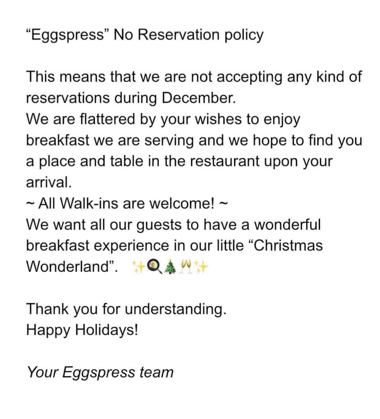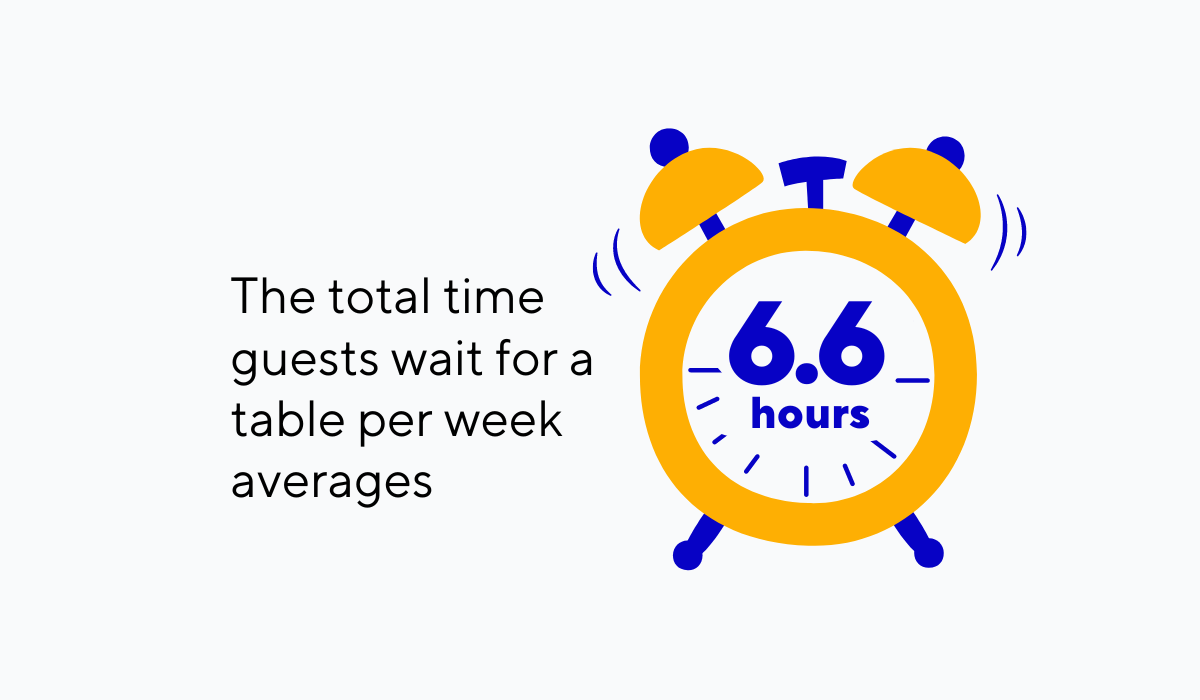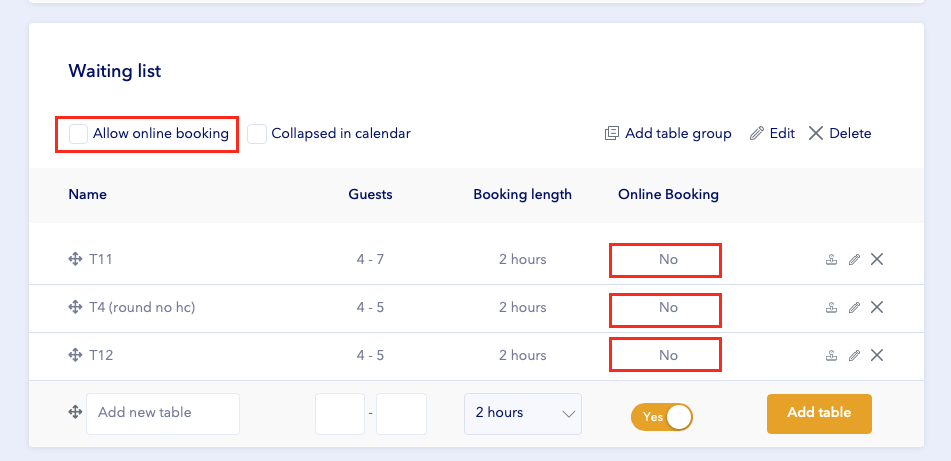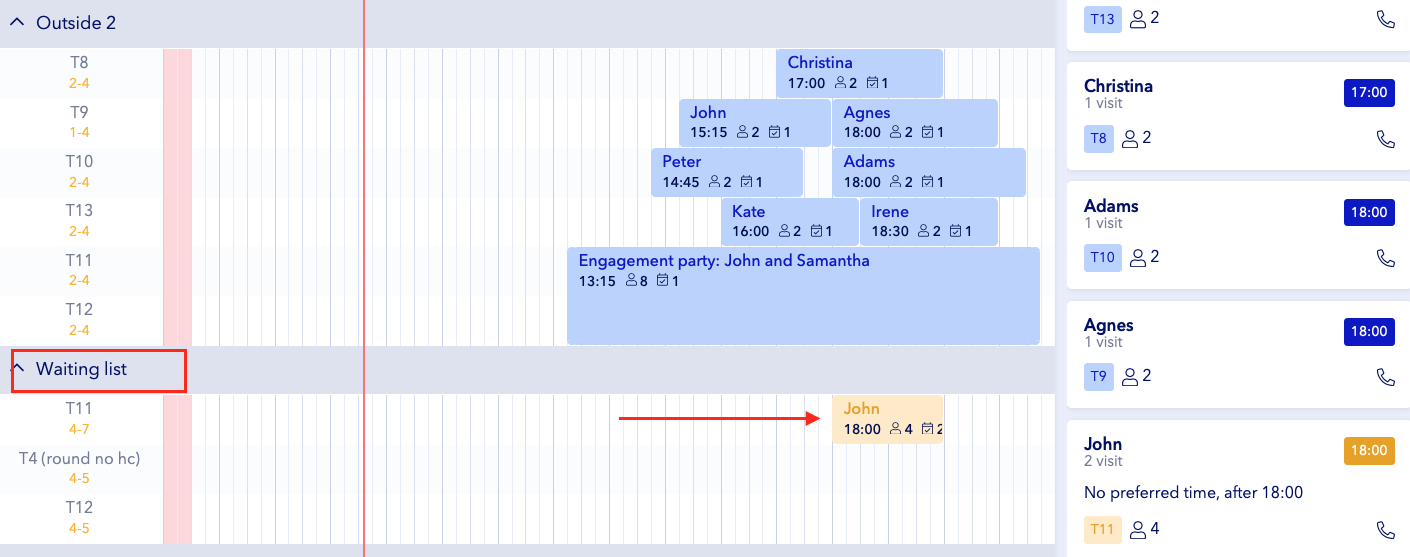One of the trickiest decisions facing restaurateurs is the choice between taking reservations, welcoming walk-ins, or doing a combination of both.
This strategic decision can significantly impact how your business operates, influencing your table turnover rate, your profitability, and the customer experience.
That's why it's really important to choose wisely.
Fortunately, this article is here to help by giving you the info you need to tackle this decision head-on.
We'll look at both options in detail, weigh their good and bad sides, and share helpful advice to assist you in managing your restaurant operations better.
Let’s begin by exploring why taking reservations might be a good idea for your business.
What Are the Pros and Cons of Taking Reservations
Imagine a full and bustling restaurant, with staff efficiently darting between tables, without any guests waiting for an open spot—and instead being seated immediately after arriving.
This ideal scenario might seem impossible, but it’s a potential reality when you master the art of taking reservations.
In the following sections, we will delve into the pros and cons of taking reservations and uncover the potential benefits and limitations this strategy has in store for your business.
The Pros
Having a predictable flow in restaurant operations is highly beneficial, and by accepting reservations, you can gain more control over your guest count and your restaurant's capacity.
Knowing how many guests to expect and when they will arrive can greatly optimize the way you run your restaurant.
Reservations can help you control your service rhythm, avoiding unanticipated rushes that catch you and your staff off guard and impact the service quality.
There are many advantages of this practice, some of which are illustrated below.

Source: Tablein
Consider a local restaurant that sees a rise in the number of guests over the weekends.
With reservations, they can be sure they have enough food in stock to meet the demand, avoiding disappointed customers and lost sales.
What’s more, this restaurant can allow guests to book a table throughout the day, providing a more consistent flow of diners and revenue instead of having to wait for the 6-9 PM golden hour.
Reservations can even help manage your team better.
By arranging your staff schedule to meet the expected workload, you ensure they are neither understaffed nor, even more importantly, overstaffed.
Finally, taking reservations is a great asset in managing wait times.
When patrons reserve a table, they don't need to wait to be seated, leading to a better guest experience and smoother operations.
However, the benefits of reservations extend beyond your restaurant doors.
When properly managed, taking reservations can actually help reduce food waste, which is good for both your bottom line and the environment.
Consider the data in the following image.

Illustration: Tablein / Data: Greenblue
Since 45% of this waste occurs at the preparatory stage, enhancing your inventory management by taking reservations plays an important part in minimizing the negative environmental effect of your business.
How so?
Knowing the expected number of guests gives you a reliable estimate for meal preparation, allowing your kitchen to organize your stock more efficiently and reduce unnecessary food waste.
And by not wasting money on excess food, you’ll ultimately enhance your profit margins.
Taking reservations isn’t just holding a table for customers but an important business strategy that can enhance and optimize your operations.
The Cons
While taking reservations can be a ticket to predictability and greater profits, this practice also has a few disadvantages you must keep in mind.
While you undoubtedly gain a lot of control over your restaurant operations with bookings, it would be inadvisable to rely on them completely.
The issue that arises lies in the very nature of reservations. They are dependent on human behavior, which is unpredictable.
This unpredictability can expose the business to problems such as no-shows and last-minute cancellations, which are significant pitfalls in using this strategy.
Consider the following statistic.

Illustration: Tablein / Data: Zonal
According to a Zonal survey, in big cities, the rate of no-shows can be as high as 1 in 5.
These missed reservations can wreak havoc on the best-laid plans, leading to wasted resources and lower profits.
Empty tables, after all, spell out missed revenue opportunities.
To combat this problem, you may need to create specific reservation policies, which include no-show and cancellation fees.

Source: Half and Half
The image above shows what Half and Half’s cancellation policy looks like. They’ve set up a system that requires diners to cancel a booking a day in advance.
Failing to cancel in this timeframe or missing the reservation completely results in a rather hefty penalty.
While such a policy may discourage customers from casually forgetting they’ve booked a table, it opens a whole new can of worms as it could deter some customers from making a reservation in the first place.
After all, they can simply reserve a table at a different establishment with no such fees.
Even if they decide to book a table despite the fees, they may need clarification on your policy and call your establishment for details, taking away precious time from you or your staff.
So, reservations introduce a level of uncertainty in your operations that, while manageable with a clear reservation policy, can still prove troublesome.
What Are the Pros and Cons of Accepting Walk-Ins
The disadvantages we just discussed may make you consider dispensing with a reservations-only policy altogether and avoid the risk of costly no-shows.
And the next strategy, a walk-in-only approach, can be the perfect antidote to the cons of reservations.
But does embracing a "first-come, first-served" policy paint a rosy picture all around? Let's take a closer look at both sides of this practice.
The Pros
Being a simple and flexible approach to restaurant management, welcoming all walk-ins just might be the direction your restaurant needs.
Accepting walk-ins only certainly comes with its perks.
Some restaurants that may have lost a considerable amount of revenue due to no-shows might benefit from trying this option out.
As shown in the next screenshot, the team at Eggspress did just that—choosing to forego reservations during the buzzing month of December.

Source: Eggspress on Facebook
This strategy, while seeming contrary to traditional restaurant management, provides them with a lot of flexibility and adaptability that's hard to achieve with reservations.
Think back to the extensive reservation policies we discussed earlier, with their stringent cancellation times and hefty no-show fees.
Eggspress's policy, in comparison, is a breath of fresh air: "All walk-ins are welcome!" Simple and straightforward.
The simplicity, however, doesn't mean compromised profitability.
In fact, it can be quite the opposite. Ross Boardman, a seasoned restaurateur, presents an interesting perspective on that topic in a Quora answer.

Source: Quora
Essentially, Boardman is pointing to the fact that a reservations-only policy can limit the potential for table turnover.
With walk-ins, tables can be filled and emptied more frequently, accommodating a higher number of patrons and thus generating more profits.
The following quote from this article from The Globe and Mail showcases this increased profits in terms of table turnover rate.
Restaurants that take reservations can "turn" their tables an average of 1.5 to two times per night, three if they're hopping. A place that takes walk-ins only, on a good night, can see as many as four turns.
Such a higher table turnover can be a potent profit booster.
If your restaurant often sees a long line of eager customers waiting for a seat, these turnover numbers can be music to your ears.
Overall, the benefits of adopting a walk-in-only policy can create a dynamic environment at your eatery, resulting in more diners being served and increasing your revenue.
The Cons
Of course, as with the strategy of taking reservations, a walk-in-only policy has several downsides.
One of the main downsides that arise concerns the effect this approach can have on the customer experience, most notably the impact of long wait times.

Illustration: Tablein / Data: FSR
According to a Long Range Systems survey of 267 restaurant owners and managers, these wait times affect nearly all establishments, with 93% of restaurants reporting they have some wait time at their business.
And the wait times are not so short, either, with the average wait time being 30 minutes.
Imagine a small family arriving at your restaurant on a busy Friday evening, only to find they have to wait half an hour to be seated.
Not the most welcoming of experiences, is it?
The available data further adds to the downsides of this practice.
For example, the following study presents a detailed insight into the behavior of customers when they face long waits.

Illustration: Tablein / Data: Research Gate
The first and most common thing guests do in a long queue is simply leave the line and go visit another establishment.
Even if they eventually get seated, the wait time might have been so long that they stay for a shorter period of time, missing out on ordering more drinks or desserts.
And their negative experience can end up deterring them from visiting your eatery in the near future.
Obviously, none of the behaviors are beneficial for your establishment's success.
For this reason, implementing a walk-in policy requires very careful consideration. More specifically, you might want to think about the following aspects:
- How often your restaurant reaches full capacity
- Your restaurant’s concept
Simply put, if you seldom have guests waiting in line for a table or you rarely reach full capacity, you will be better off taking reservations.
Also, if you are offering exclusivity with a fine dining establishment, it’s almost certain that you will have to go with a reservations-only policy.
To conclude, navigating the potential pitfalls of walk-in policies is necessary to ensure that your business remains appealing to guests and doesn't disrupt their customer experience.
Taking Reservations or Accepting Walk-Ins: Which Is Better
The choice between accepting reservations or walk-ins in your restaurant is less about picking one or the other and more of a careful balancing act.
Both have their merits and should be considered together rather than as separate practices.
While the benefits of reservations might edge out a walk-in-only policy because of the greater control over your restaurant operations, the trick is in the mix.
Employing a balanced strategy that accommodates both can unlock a multitude of benefits, such as the following:
- brings predictability but allows for flexibility
- maximizes your revenue potential by increasing table turnover
- enhances the customer experience as guests have more options
Yet, managing this mixed practice can be complicated unless you have the right tools.
Enter, Tablein, our very own restaurant reservation system that simplifies your complex booking needs.
Whether it's handling reservations made by guests or those manually added by staff, Tablein provides a comprehensive overview of all of them.

Source: Tablein
The image above is a testament to how effortlessly Tablein organizes reservations.
With our tool, your staff can view all reservations and organize them through various filters like start and end time and reservation status—all through a single screen showing all the day's reservations.
But how about those tables you'd like to save for walk-ins?

Source: Tablein
With just a few steps, the tables selected in the image above will no longer be available for online booking.
After this process, T11, T4, and T12 will be dedicated to walk-ins, and the staff can start adding guests to the waiting list, as illustrated below.

Source: Tablein
When a new guest and their contact info is added, Tablein can then dispatch an automatic SMS when their table is prepared, and the status of their reservation can quickly be updated in the app.
This method turns your waitlists into a structured and predictable process, a change your patrons will genuinely appreciate.
As you can see, a reservation system can help you make the best out of both practices, helping you manage your reservations effectively and optimizing your waitlist management so you can take walk-ins.
Conclusion
Throughout our article, we talked about the benefits and drawbacks of taking reservations and walk-ins in your restaurant operations.
Hopefully, you’ve gained a fresh perspective on these two core business strategies that you can leverage to tailor an approach that suits your establishment’s unique requirements and your patrons’ preferences.
Whether you like the added convenience and control of reservations or wish to try and maximize profitability by exclusively taking walk-ins, you should carefully consider your choice.
When in doubt, a balance of both approaches can work marvels.
Take these pieces of advice, apply them to your own situation, and watch your restaurant thrive.
Get a 30-day Exclusive Trial
As a Tablein blog reader, you’re eligible for an exclusive 30-day free trial to experience our simple reservation solution for your restaurant.
Enter your business email, and we’ll send you all the steps needed to create your account.
Share this
You may also like

6 Benefits of a Digital Restaurant Waitlist

How Your Restaurant Staff Benefits From an Automated Booking System
